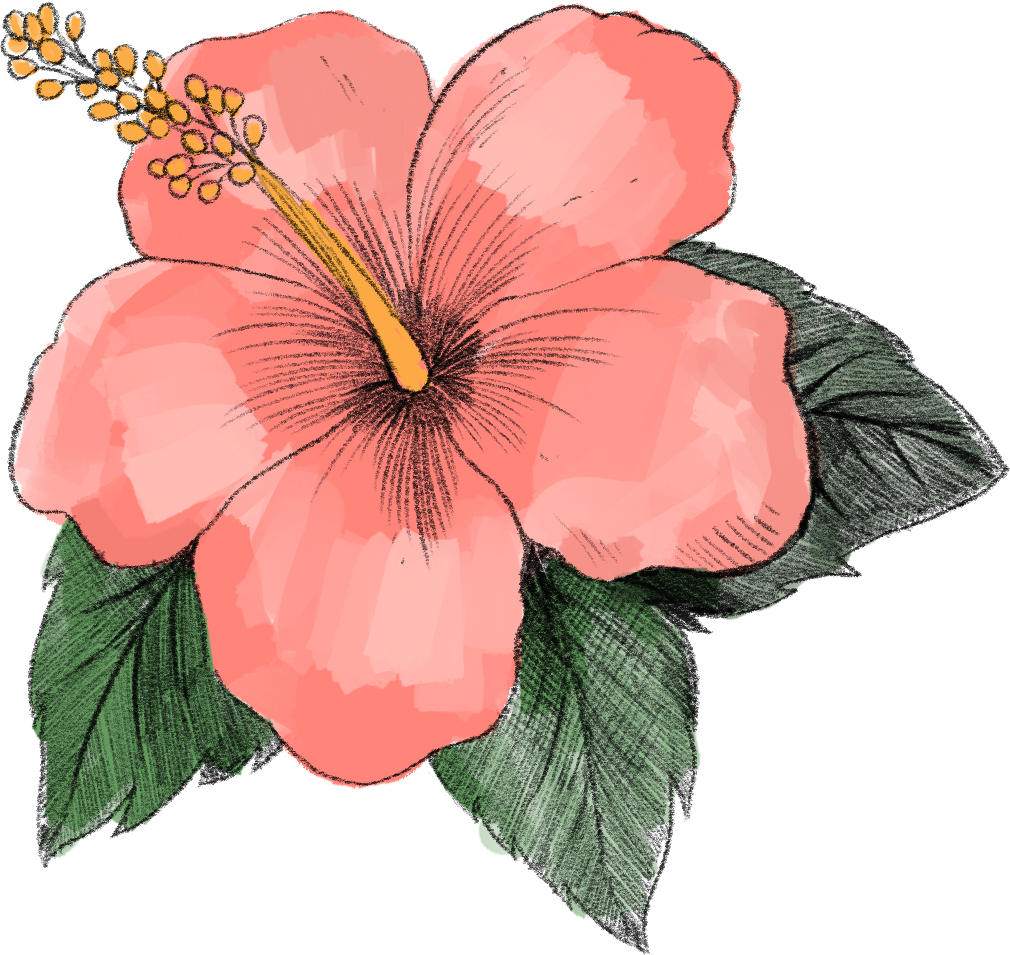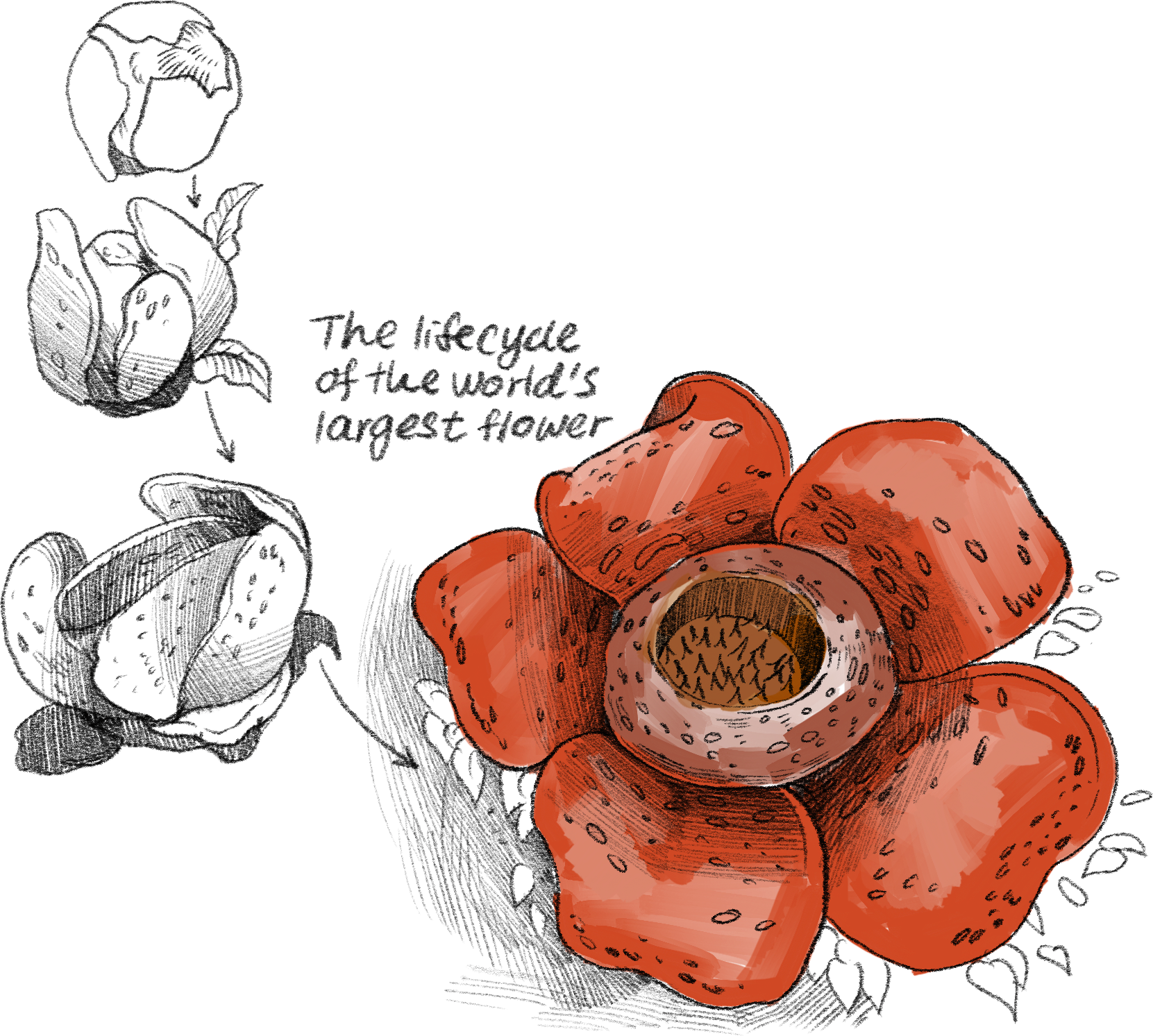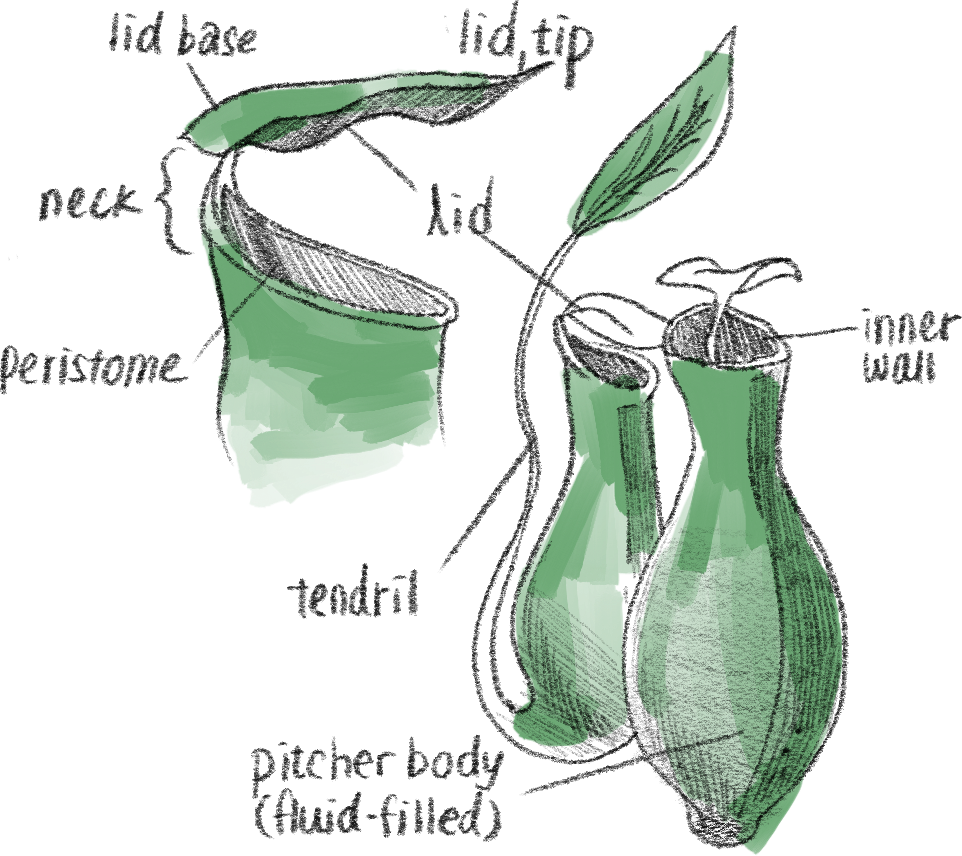Malaysia's Floral Treasures
Exploring the Exotic Blossoms in Malaysia
Get ready for a wild ride through the lush jungles and vibrant gardens of Malaysia, where the beauty of nature blooms at every turn. This is a land where an array of flowers come in every color of the rainbow, where exotic orchids sway in the breeze, and where towering trees provide a home for a myriad of creatures. So let's dive in and discover the secrets of this botanical paradise!
Malaysia's National Flower, the Hibiscus

Hibiscus, a member of the Malvaceae family, is identified by its trumpet-like structure, five petals, and a long pollen tube. It has several subspecies, but the most remarkable one is the hibiscus rosa-sinensis, which is Malaysia’s national flower. It is also known variously as “rose mallow,” “shoe flower,” ‘Chinese Hibiscus,” “Queen of Tropical Flowers,” or “Bunga Raya” in Malaysia.
With its evergreen shrub and glossy single stem leaves, the hibiscus is a small tree that can reach heights of up to 2.5 meters. This plant boasts several hundred species with flowers that come in a spectrum of colors such as white, pink, purple, and yellow.


Malaysia's National Flower, the Hibiscus
Hibiscus, a member of the Malvaceae family, is identified by its trumpet-like structure, five petals, and a long pollen tube. It has several subspecies, but the most remarkable one is the hibiscus rosa-sinensis, which is Malaysia’s national flower. It is also known variously as “rose mallow,” “shoe flower,” ‘Chinese Hibiscus,” “Queen of Tropical Flowers,” or “Bunga Raya” in Malaysia.

With its evergreen shrub and glossy single stem leaves, the hibiscus is a small tree that can reach heights of up to 2.5 meters. This plant boasts several hundred species with flowers that come in a spectrum of colors such as white, pink, purple, and yellow.

On 28 July 1960, Prime Minister Tunku Abdul Rahman Putra Al-Haj declared the hibiscus, or more specifically its subspecies Hibiscus rosa-sinesis, as Malaysia’s national flower. This decision was motivated by the flower’s vibrant colors, which represented the courage and vitality of the people. Additionally, the five petals of the flower also symbolize the five principles of the Rukun Negara.
The flower was given the name “Bunga Raya” where “raya” refers to something celebratory or grand. Thus, the name “Bunga Raya” translates to “celebratory flower” reflecting the celebration of unity in a multiracial nation.

On 28 July 1960, Prime Minister Tunku Abdul Rahman Putra Al-Haj declared the hibiscus, or more specifically its subspecies Hibiscus rosa-sinesis, as Malaysia’s national flower. This decision was motivated by the flower’s vibrant colors, which represented the courage and vitality of the people. Additionally, the five petals of the flower also symbolize the five principles of the Rukun Negara.
The flower was given the name “Bunga Raya” where “raya” refers to something celebratory or grand. Thus, the name “Bunga Raya” translates to “celebratory flower” reflecting the celebration of unity in a multiracial nation.
The hibiscus is a valuable plant that serves numerous purposes, ranging from medicinal to decorative. In Malaysia, people have been utilizing hibiscus for centuries to treat various health issues, such as liver problems, high blood pressure, fever, digestive disorders, and skin conditions. The flower is also a common ingredient for making fragrant oils, tea, supplements, and perfumes. Moreover, the hibiscus serves as a popular decorative element for embellishing homes and gardens.

The Largest Flower in the World, Rafflesia
The Largest Flower in the World, Rafflesia

Rafflesia, a genus of parasitic flowering plants, can be found in the lush jungles of Malaysia. These plants are known for their massive size, distinctive appearance, and strong odor.
The Rafflesia belongs to the Rafflesiaceae family and is among the largest flowers in the world. Considered one of the rarest in the world, not only for its gigantic petals but also for the distinctive and unpleasant odor it emits (often compared to rotting meat) which attracts pollinators and prey. The genus rafflesia can also be found in the tropical rainforests of Thailand, Indonesia and the Philippines. There are a total of 20 species worldwide, with Malaysia and Indonesia each having eight of the known Rafflesia species.
The Largest Flower in the World, Rafflesia

Rafflesia, a genus of parasitic flowering plants, can be found in the lush jungles of Malaysia. These plants are known for their massive size, distinctive appearance, and strong odor.
The Rafflesia belongs to the Rafflesiaceae family and is among the largest flowers in the world. Considered one of the rarest in the world, not only for its gigantic petals but also for the distinctive and unpleasant odor it emits (often compared to rotting meat) which attracts pollinators and prey. The genus rafflesia can also be found in the tropical rainforests of Thailand, Indonesia and the Philippines. There are a total of 20 species worldwide, with Malaysia and Indonesia each having eight of the known Rafflesia species.
The Rafflesia blooms once a year, reaching a diameter of over one meter, with the world record being 107cm. It can also weigh up to 7kg. It has five cabbage-like, leather-textured, dull-red spotted petals that surround a bowl-like center, which can trap flies and insects as a means of sustenance.
The Rafflesia flower takes approximately nine months to bloom and only remains in full bloom for a week. When it does bloom, the flower releases a strong odor of rotting meat, earning it the local nickname of "Corpse Flower." The massive Rafflesia flower lacks any leaves, roots, or stems and instead attaches itself to a host plant, the Tetrastigma vine, found only in undisturbed rainforests. Through this host plant, the Rafflesia obtains water and nutrients necessary for its growth.
The Rafflesia has become a symbol of Malaysia’s rich biodiversity, and it is often featured in tourism campaigns as a popular attraction for visitors. It is also considered a protected species under the country's National Heritage Act 2005 and is actively preserved by both the government and local communities.
The Delicate Beauties, Orchids
The Delicate Beauties, Orchids

Did you know that Malaysia boasts a rich diversity of Orchids, with over 3,000 species found in the country? To break it down further, approximately 1,000 Orchid species are located in Peninsular Malaysia, while a significant number of 2,500 species grow in Sabah and Sarawak. These Orchids can be found growing in a variety of habitats, such as lowland rainforests, montane forests, and limestone hills. Among the most well-known Orchid species in Malaysia are the Vanda Miss Joaquim, Dendrobium, and Phalaenopsis.

Orchids are not only beautiful but also hold cultural significance in Malaysia. The juices and extracts from the flowers, leaves, and roots are used medicinally or cosmetically. Dyes, pastes, poultices, washes, flavorings, perfumes, and more are all made from parts of the Orchid plant. They are also used in religious and cultural ceremonies and are considered a symbol of love, beauty, and elegance.
Today, Malaysia continues to be one of the world's largest producers of Orchids, with vast plantations and nurseries dedicated to cultivating these magnificent flowers. These stunning flowers have captivated the hearts of Malaysians for centuries, for their beauty, cultural significance, and economic value, making them an integral part of the country's identity.
Tropical Pitcher Plant, Ingenious Traps of the Tropical Forest

The Nepenthes genus, a type of Pitcher Plant, is recognized worldwide for its distinctive "pitfall trap" structure that features a deep-cupped cavity or pitcher holding a liquid capable of breaking down small insects that enter it. It is estimated that there are approximately 170 species of Pitcher Plants belonging to this genus. Among these, 35 species are endemic in the habitats of Sabah and Sarawak, while 11 species can be found in Peninsular Malaysia.
Nepenthes Rajah, also known as the "King of the Pitcher Plants," is recognized as the largest carnivorous plant in the world and the largest among the Pitcher Plants. It is exclusively located on Mount Kinabalu in Sabah. With a height of up to 41 centimeters and a width of 20cm, each pitcher can hold up to 3.5 litres of liquid and 2.5 litres of digestive fluid.
Its unique structure is designed to lure insects to it, which are then unable to escape and are subsequently digested by the plant. On a number of occasions, rats have been found half-digested inside the pitchers, and other small vertebrates such as small birds, lizards, and frogs occasionally fall victim to the plants as well. Malaysia is also home to several other popular species of Pitcher Plants, such as Ampullaria, Lowii, Albomarginata, Gracilis, Macfarlanei, and Rafflesiana.

Pitcher Plants have a significant role in forest ecosystems and contribute to their development, a fact that may be unfamiliar to many. These carnivorous plants typically thrive in environments where the soil lacks essential minerals and is excessively acidic, making it difficult for most plants to grow. The Pitcher Plant has a unique adaptation wherein it obtains the necessary nutrients for survival by digesting dried leaves or insects that become trapped within its cavity. Therefore, it does not rely on soil nutrients to sustain its growth.
In Malaysia, Pitcher Plants have been used for a variety of purposes, including as a source of food and medicine. Today, they are widely studied by botanists and ecologists, and are considered a vital part of Malaysia's natural heritage.
